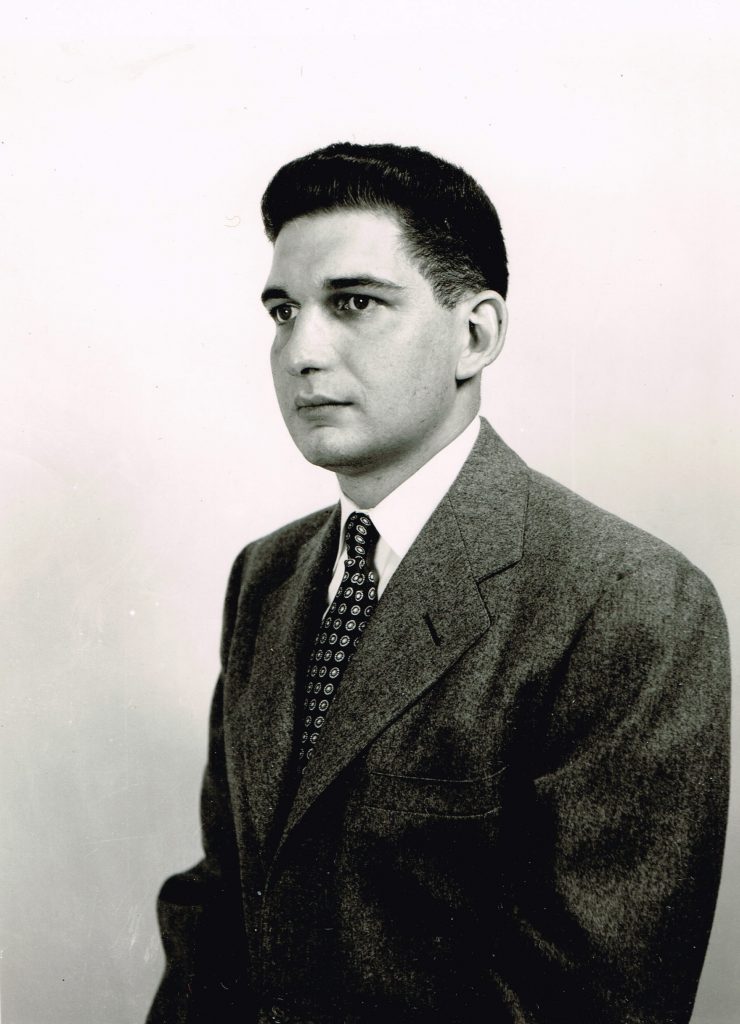Marion Edward Cieslicki was an Polish American metallurgist who worked on the Manhattan Project from 1944 to 1946 at the University of Chicago and at Los Alamos. He worked on the bomb initiation and critical mass design. He was one of those exposed to radiation during the Louis Slotin criticality accident in 1946.
He was born in Denbo, PA on February 11, 1923, and earned his bachelor’s degree in Metallurgy at the Carnegie Institute of Technology (CIT). He was subsequently drafted by the president of CIT to work on the Manhattan Project upon graduation. After the war, he returned to CIT for graduate work and later worked for General Electric, Wyman-Gordon, and Union Carbide. His work also included the registration of patents for the uranium nickel alloy and nickel base alloy. During the Cold War, he put himself at great risk in service of the federal government while he received only a dollar-a-year salary as compensation. Additionally, he worked on the development of the heat shield for the first rocket launched into space by the US. He passed away at the Brookhaven National Laboratory on July 18, 1965 at the age of 42 from leukemia contracted as a result of the accident at Los Alamos.
Marion Edward Cieslicki’s Timeline
1923 Feb 11th Born in Denbo, PA.
19441945 Worked on the Manhattan Project at the University of Chicago Metallurgical Laboratory.
19451946 Worked at Los Alamos Scientific Laboratory on bomb initiation and critical mass design.
1946 May 21st Injured in criticality accident.
19571963 Worked for Wyman-Gordon as head of the corporate research and development department.
1959 Led the team at Wyman-Gordon that discovered the direct forging method for beryllium. News of this discovery was covered by both the New York Times and the New York Harold Tribune in March of 1959.
19631965 Systems Development Manager of the Defense Space Systems Department of Union Carbide.
1965 Jul 18th Died of acute myelogenous leukemia at the Brookhaven National Laboratory as a result of the radiation exposure he had experienced during the 1946 criticality accident at Los Alamos.
1965 Jul 24th Robert Oppenheimer conveys “good wishes, and a word of recollection, gratitude and comradeship” in a note to Marion Cieslicki.
1966 Dorothy Cieslicki filed a complaint against the United States Government, stating the 1946 criticality accident was “caused by tortuous, negligent or wrongful acts or omissions of employees of the defendant while acting within the scope of their offices or employments… as a result the ‘decedent suffered personal injuries.’
1968 Facing the need to release information requested in the lawsuit, the United States Governments settled. See “America’s Radiation Victims,” by Clifford T. Honicker, New York Times Magazine, November 19, 1989.
1979 Marion Cieslicki’s treating physician at Los Alamos co-authored a paper that was presented publicly at a conference in Oak Ridge, Tennessee in 1979. The paper included information from Marion Cieslicki’s personal medical records that he had requested and been denied access to while he was alive.





